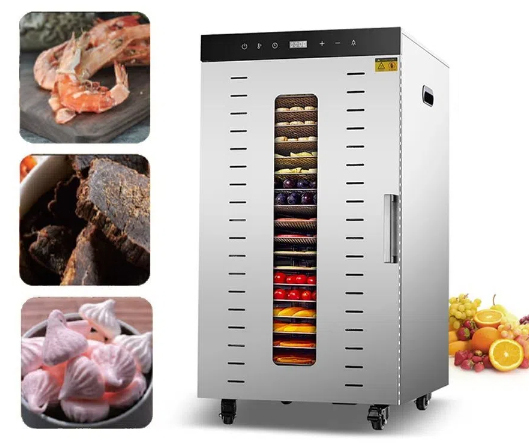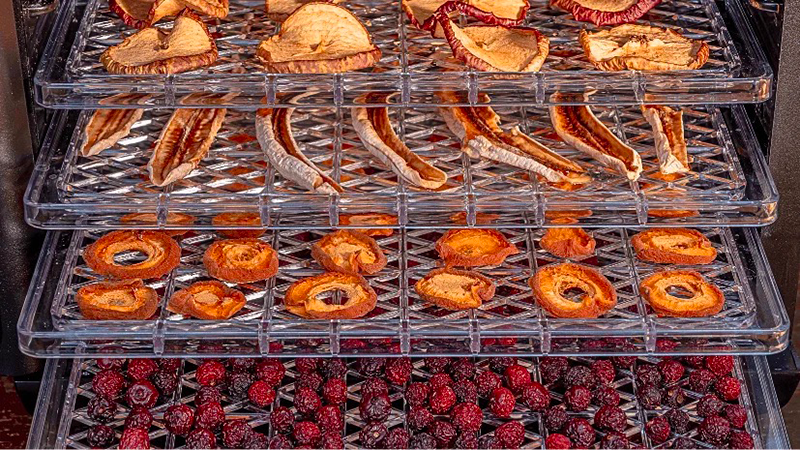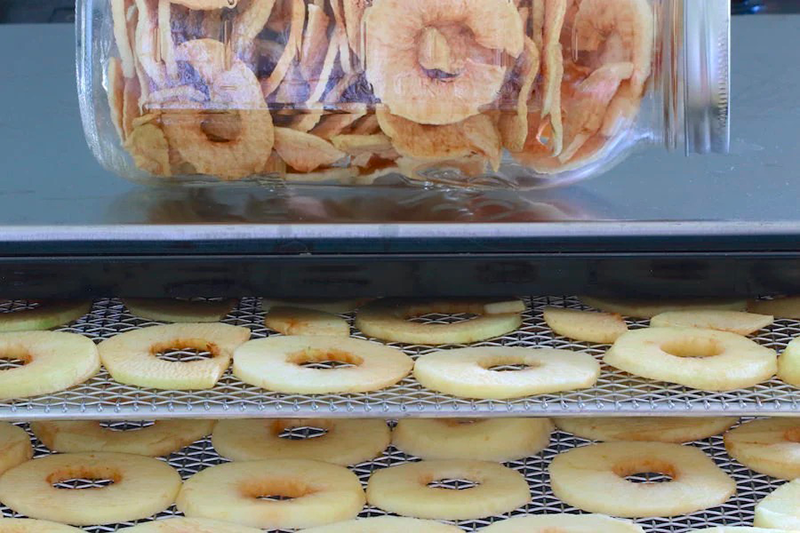
Content Menu
● What Is a Cold Dehydration Machine?
● Benefits of Using a Cold Dehydration Machine
>> 1. Nutrient Preservation
>> 2. Extended Shelf Life
>> 3. Versatility
>> 4. Energy Efficiency
>> 5. Reduced Food Waste
● Key Features to Consider
>> 1. Temperature Control
>> 2. Airflow System
>> 3. Capacity
>> 4. Timer Function
>> 5. Ease of Cleaning
● Types of Cold Dehydration Machines
>> 1. Stackable Dehydrators
>> 2. Horizontal Airflow Dehydrators
>> 3. Industrial Dehydrators
● How to Choose the Right Machine for Your Needs
>> Step 1: Assess Your Requirements
>> Step 2: Compare Features
>> Step 3: Set a Budget
● Tips for Using Your Cold Dehydration Machine
● Conclusion
● FAQs
>> 1. What foods can I dehydrate using a cold dehydration machine?
>> 2. How does cold dehydration differ from traditional methods?
>> 3. Are industrial cold dehydration machines worth it for small businesses?
>> 4. What maintenance is required for these machines?
>> 5. Can I dehydrate multiple types of food at once?
● Citations:
Food dehydration is an essential process for preserving food, enhancing shelf life, and maintaining nutritional value. Whether you are a home cook, a food business owner, or a commercial producer, choosing the right cold dehydration machine is crucial to achieving optimal results. This guide will walk you through the key factors to consider when selecting the best cold dehydration machine for your needs.

What Is a Cold Dehydration Machine?
A cold dehydration machine is designed to remove moisture from food at low temperatures, preserving its nutrients, texture, and flavor. Unlike traditional high-heat dehydrators, cold dehydration machines use advanced airflow and temperature control systems to ensure minimal nutrient loss and consistent drying.
Cold dehydration technology has become increasingly popular in recent years due to its ability to maintain the integrity of food products. By using low temperatures and controlled airflow, these machines can dehydrate food without cooking it, making them ideal for health-conscious consumers and businesses looking to produce high-quality dried goods.
Benefits of Using a Cold Dehydration Machine
Investing in a cold dehydration machine offers numerous advantages over traditional drying methods. Below are some of the key benefits:
1. Nutrient Preservation
Cold dehydration retains essential vitamins, minerals, and enzymes that are often lost during high-heat drying processes. For example:
- Vitamin C in fruits like oranges and strawberries remains intact.
- Enzymes in herbs like parsley and basil are preserved.
2. Extended Shelf Life
Dehydrated foods have significantly longer shelf lives compared to fresh produce. Properly dried foods can last anywhere from several months to years when stored in airtight containers.
3. Versatility
Cold dehydration machines are incredibly versatile and can handle a wide variety of foods, including:
- Fruits (e.g., apples, bananas, mangoes)
- Vegetables (e.g., carrots, zucchini, kale)
- Proteins (e.g., beef jerky, fish)
- Herbs and spices (e.g., thyme, oregano)
4. Energy Efficiency
Modern cold dehydration machines are designed with energy efficiency in mind. They consume less power than traditional ovens or high-temperature dehydrators while delivering superior results.
5. Reduced Food Waste
Cold dehydration helps minimize food waste by allowing you to preserve excess produce before it spoils. This is especially beneficial for businesses that deal with seasonal fruits or vegetables.
Key Features to Consider
When shopping for a cold dehydration machine, it's important to evaluate specific features that align with your needs. Below are some critical factors to consider:
1. Temperature Control
Different foods require different drying temperatures. A good cold dehydration machine should offer adjustable temperature settings to accommodate various types of food. For instance:
- Herbs: 90–100°F
- Fruits & Vegetables: 130–160°F
- Meats/Jerky: 145–160°F
Temperature precision ensures that your food dries evenly without losing its nutritional value.
2. Airflow System
Airflow plays a crucial role in the drying process. Machines with horizontal airflow systems provide uniform drying by circulating air evenly across all trays. This eliminates the need for manually rotating trays, which is common in stackable dehydrators with vertical airflow.
3. Capacity
Capacity is another important consideration:
- For home use: Opt for a compact model with 4–6 trays.
- For small businesses: Choose mid-sized models with 10–20 trays.
- For large-scale operations: Industrial dehydrators with up to 480 trays are ideal.
Assess your production volume before deciding on the size of the machine.
4. Timer Function
A built-in timer allows you to set specific drying durations based on the type of food being dehydrated. This feature ensures consistent results and prevents over-drying or under-drying.
5. Ease of Cleaning
Cleaning your dehydrator regularly is essential for maintaining hygiene and efficiency. Look for machines with removable trays that are dishwasher-safe or easy to clean manually.

Types of Cold Dehydration Machines
There are several types of cold dehydration machines available on the market, each catering to different needs:
1. Stackable Dehydrators
These machines feature stackable trays that allow you to adjust capacity based on your needs.
- Pros: Compact design, affordable.
- Cons: Uneven drying; requires manual tray rotation.
- Best For: Home users or those with limited space.
2. Horizontal Airflow Dehydrators
Horizontal airflow dehydrators have slide-in trays and fans mounted at the back.
- Pros: Even drying without tray rotation; better temperature control.
- Cons: Larger footprint; higher cost.
- Best For: Small businesses or serious home users.
3. Industrial Dehydrators
Industrial models are designed for large-scale production and come with advanced features like programmable settings and energy-efficient designs.
- Pros: High capacity; customizable settings; durable build.
- Cons: Expensive; requires significant space.
- Best For: Commercial producers or food processing companies.
How to Choose the Right Machine for Your Needs
Selecting the best cold dehydration machine involves careful consideration of your specific requirements:
Step 1: Assess Your Requirements
Start by identifying your goals:
- Are you dehydrating food for personal use or business purposes?
- What types of food will you be processing?
- How much space do you have available?
Step 2: Compare Features
Evaluate machines based on their temperature range, airflow system, capacity, timer functions, and ease of cleaning.
Step 3: Set a Budget
Cold dehydration machines vary widely in price:
- Home models typically range from $50–$300.
- Commercial models cost between $500–$2000+.
- Industrial units can exceed $5000 but offer unmatched efficiency and capacity.
Tips for Using Your Cold Dehydration Machine
To get the most out of your cold dehydration machine, follow these tips:
1. Pre-Treat Foods: Wash fruits and vegetables thoroughly before dehydrating them. Consider blanching vegetables or soaking fruits in lemon water to prevent discoloration.
2. Slice Evenly: Cut foods into uniform slices to ensure consistent drying times.
3. Avoid Overloading Trays: Leave enough space between pieces for proper airflow.
4. Store Properly: Once dried, store foods in airtight containers away from light and moisture.
Conclusion
Choosing the best cold dehydration machine depends on your specific needs, such as capacity, features, and budget. By understanding key factors like temperature control, airflow systems, and ease of cleaning, you can make an informed decision that ensures high-quality results every time.
Whether you're preserving seasonal produce at home or running a commercial operation, investing in a reliable cold dehydration machine will save time, reduce waste, and deliver superior dried products.

FAQs
1. What foods can I dehydrate using a cold dehydration machine?
You can dehydrate fruits (e.g., apples, bananas), vegetables (e.g., carrots, kale), meats (e.g., jerky), herbs (e.g., basil), and even snacks like fruit leather.
2. How does cold dehydration differ from traditional methods?
Cold dehydration uses low temperatures to preserve nutrients and enzymes, whereas traditional methods rely on higher heat that may degrade nutritional value.
3. Are industrial cold dehydration machines worth it for small businesses?
Yes, they offer higher efficiency and capacity but may be overkill if your production volume is low.
4. What maintenance is required for these machines?
Regular cleaning of trays and fans is essential to prevent residue buildup and maintain efficiency.
5. Can I dehydrate multiple types of food at once?
Yes, but ensure similar drying times and avoid mixing strong-smelling foods like onions with fruits.
Citations:
[1] https://thruhikers.co/dehydrators/
[2] https://www.thespruceeats.com/best-food-dehydrators-4077285
[3] https://septree.com/blogs/news/dehydration-machines-101-the-essential-tool-for-food-lovers
[4] https://www.dehydratorsamerica.com/category/industrial-food-dehydrators
[5] https://www.youtube.com/watch?v=Ny6tGbu2nQ0
[6] https://www.youtube.com/watch?v=qtC36z0HleQ
[7] https://www.seriouseats.com/best-food-dehydrators-5216308
[8] https://pleasanthillgrain.com/resources/dehydrators-buying-guide
[9] https://etsolutions.in/how-to-choose-the-best-food-dehydrator-machine-for-your-kitchen/
[10] https://www.istockphoto.com/photos/dehydrator
[11] https://www.youtube.com/watch?v=rR2G5UO-5Ms
[12] https://www.youtube.com/watch?v=mtDzdYoyeR8
[13] https://www.istockphoto.com/photos/food-dehydrator
[14] https://www.reddit.com/r/Frugal/comments/10t4efk/im_considering_buying_a_food_dehydrator/
[15] https://www.gettystewart.com/dehydrating-equipment-what-you-need-to-get-started/
[16] https://www.foodandwine.com/lifestyle/kitchen/best-food-dehydrators
[17] https://www.shutterstock.com/search/dehydrator-machine
[18] https://stock.adobe.com/search?k=dehydrator
[19] https://www.youtube.com/watch?v=l81gCTvoUjg
[20] https://www.reddit.com/r/dehydrating/comments/11kewug/buying_a_dehydrator_share_your_tips_please/
[21] https://www.youtube.com/watch?v=Namf-Ddo_Xo











